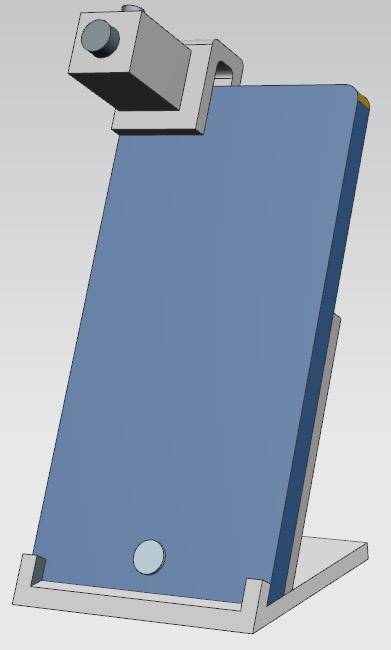LSU BS Fellow, ME Professor Create Sensor to Detect COVID-19
January 21, 2021
 BATON ROUGE, LA – Though a vaccine for COVID-19 is currently being distributed around
the world, it doesn’t mean the virus will disappear anytime soon. Case numbers and
deaths are at an all-time high ever since the coronavirus outbreak was declared a
pandemic last spring.
BATON ROUGE, LA – Though a vaccine for COVID-19 is currently being distributed around
the world, it doesn’t mean the virus will disappear anytime soon. Case numbers and
deaths are at an all-time high ever since the coronavirus outbreak was declared a
pandemic last spring.
Wanting to help save time, and lives, LSU Biological Sciences Postdoctoral Research Fellow and experienced immunologist Luan Vu is working alongside LSU BS Wiener Professor and Endowed Chair Stephania Cormier and LSU Mechanical Engineering Assistant Professor Manas Gartia to create a smartphone-based biosensor device for detecting SARS-CoV-2 antigens and SARS-CoV-2 antibodies in body fluids.
An LSU LIFT2 grant provides Vu’s team with nearly $30,000 to complete the project.
Vu, who serves as the principal investigator on the project, was working on respiratory infections when the coronavirus outbreak began. He noticed how hard it was for people to get tested in the beginning, prompting the idea for this project.
“If I can get someone immediate test results, they can know whether or not to go to work and quarantine at home as opposed to having to wait 24 hours and going about their daily lives,” Vu said.
Gartia, who has previously developed a smartphone-based app to detect the BRCA1 breast cancer gene, is working on the biosensing part of the device, using a plasmonic-sensing approach and helping with the optical fiber integration with the smartphone.
What makes the biosensor unique from other testing kits is that it’s wearable at home or in the field. The smartphone-based device uses a nanostructure-based localized surface plasmon resonance (LSPR) biosensor that can detect viral proteins. The nanostructure-based LSPR occurs when an incident light beam strikes the nanostructure metal surface. The incident light photons are absorbed, and the energy is transferred to the electrons, which convert into surface plasmons when resonance condition is met. The reduction of energy intensity of the reflected light, which results in the spectral shift, is linear and extremely sensitive to the number of biomolecules bound to nanostructure surface of sensors. The superb sensitivity of LSPR spectral shift makes it possible to measure the binding of molecules on the nanostructure metal surface and their eventual interactions with specific ligands accurately.
Vu said the device will not only make widespread testing available, it will also help decentralize COVID-19 testing; provide a cost-effective solution for screening in large public venues such as airports, subway stations, stadiums, and shopping centers (therefore, aiding in economic reopening); and allow individuals to monitor their infectious status daily.
“The potential customers of our testing device include but are not limited to federal/state/local governments, schools and universities, public health agencies, companies, and specific community subpopulations such as athletics, bands, etc.,” Vu said. “In addition, our platform could be rapidly modified for newly emerging infectious diseases.”
Vu, who has a BS in microbiology, an MS in virology, a PhD in medical sciences, and a postdoctoral fellowship in pulmonary immunology, says that like influenza virus and other pathogens, we still need diagnostic tests for virology and serology (antibodies) even though there are efficient vaccines.
“COVID-19 is a good target to start with but not the only application,” he said. “Once we master our technology and fabrication, we can apply it to other pathogens and immunoassays. ‘Bring a lab to your home’ is going to be in the near future.”
The device currently has a patent pending thanks to help from LSU’s Office of Innovation & Technology Commercialization Director Andrew Maas.
Like us on Facebook (@lsuengineering) or follow us on Twitter and Instagram (@lsuengineering).
###
Contact: Libby Haydel
Communications Specialist
ehaydel1@lsu.edu